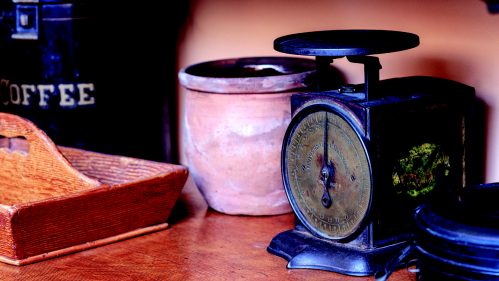The Gilded Age Cookbook Highlights Lavish Period in American Culinary History

The style and extravagance of the Gilded Age continue to be a source of fascination in American pop culture. Books, films and television shows dedicated to the era from 1868 to 1900, including The Alienist and HBO series The Gilded Age, captivate audiences.
Rutgers librarian and food writer Becky Libourel Diamond is transporting readers back in time to lavish banquet tables with snow-white linen tablecloths, delicate china, sparkling crystal glasses and luscious desserts through The Gilded Age Cookbook.
Diamond talks to Rutgers Today about the inspiration for her latest project and what sets this period apart for foodies.
What inspired you to write a cookbook dedicated to this period?
Since I started researching and writing about food 15 years ago, I accumulated historical recipes that I had reconstructed and revised for modern ingredients and methods. My first two books, Mrs. Goodfellow: The Story of America’s First Cooking School and The Thousand Dollar Dinner, both focused on events that happened in the 19th century. As a result, I became engrossed in the Victorian and Gilded Age timeframes and thought, why not put all the recipes into a cookbook? And the introduction of the Julian Fellowes Gilded Age TV show on HBO made me realize there is a revived interest in this era.
How about a little taste of what we might find inside. Anything from any of the recipes that may surprise us?
The Gilded Age was a time in America’s history that glittered with magnificent wealth on the surface, but bubbled underneath with corruption and social issues. It really painted a picture of what was happening in the United States during the last few decades of the 19th century. Much of the period’s extreme prosperity was a direct result of post–Civil War industrial innovations and booming enterprises, which fueled the greed of captains of industry who benefited from technological progress. And while the rich got richer, countless others worked long hours doing manual labor to help propel these advances forward, often living in squalid, overcrowded tenements.
The recipes included in the book reflect these factors and are featured alongside stories and imagery from the era. Probably one of the most surprising things is that many of the recipes are not difficult to make. They are original 19th century recipes, but have been tweaked, modernized and tested, since many ingredients and measurements (as well as our palates!) are different today. For example, eggs were smaller then. Baking powder and other rising agents didn’t come on the scene in full force until the mid-1800s. Measurements were not precise (e.g., wineglass and dessertspoon were common quantities then).
Do you have any other revelations to share? What sets this time period apart culinarily?
For many people, the Gilded Age conjures up images of extreme wealth, which manifested in sprawling mansions, expensive clothing and elegant dinner parties, balls and banquets, but the excessive opulence and novel inventions of the era also spawned new opportunities for cooking-related endeavors. Perhaps not as well known is that culinary roles for women and minorities became more significant during this time.
A small but significant elite class of African Americans had their own social circle of activity in New York City during the Gilded Age. Just like the white upper class, they enjoyed a thriving club scene, hosted elaborate social occasions and took summer excursions to Newport or Long Island. In addition, John Trower was an extremely successful caterer, businessman, and philanthropist who was considered among the wealthiest African Americans in Pennsylvania at the time, with his elegant wedding breakfasts legendary throughout the area. Also, Abby Fisher’s cookbook, What Mrs. Fisher Knows About Old Southern Cooking (1881), is the oldest known cookbook written by a formerly enslaved person. And, in 1896, two enterprising women, Ellin Prince Lowery and Margaret Wilmerding, launched the Afternoon Tea Room on Fifth Avenue in New York, helping incentivize other women to do the same. These factors helped define the Gilded Age and its significance to America’s culinary history.
Do you have a favorite recipe from the Gilded Age after writing this book? Have you made it at home?
I have several, so it is hard to pick just one! One I love and just made the other night for my son before he went off to college is Simply Scallops. The scallops are seared in butter and sprinkled with parsley, salt and pepper. Like the title, simple and delicious! Another favorite is deviled spaghetti, a delicious dish reminiscent of macaroni and cheese, swapping diced hard-boiled eggs for cheese. Often served for the holidays, it could be prepared ahead of time and reheated in the oven. My son loves this too, as well as guests for a recent Gilded Age Luncheon in Philadelphia I co-hosted with Chef Adam Diltz of Elwood Restaurant. They were blown away! A third are jumbles. These are cookies originally shaped like a figure eight or double ring. Since this was a time-consuming shape for a cookie, it became customary for Americans to form the dough into single rings. Although the flavors differed from recipe to recipe, the one I follow (taught at Mrs. Goodfellow’s Cooking School, the subject of my first book) contains freshly grated nutmeg, cinnamon and mace, as well as rosewater, resulting in a unique taste combination that is both spicy and delicate.
What else are you working on?
My current project is Process: The History of Processed Food (Westholme Publishing). Looking forward to sharing this with the Rutgers community as well!


